Thought of the Day

Every morning, you have two choices: continue to sleep with your dreams or wake up and chase them.


Every morning, you have two choices: continue to sleep with your dreams or wake up and chase them.

If there were an Oscar for “Most Dramatic Cat,” Ben would already have his acceptance speech written. This 3-year-old black and white charmer takes life very seriously—especially playtime. Whether he’s dramatically flopping over for attention or staging a wrestling match with his favorite toy, Ben makes sure you never miss a performance.
He’s a social guy who loves to play and wrestle with other cats, so he’d do best in a home with a feline friend who can handle his antics (and maybe keep him humble). But behind all that flair is a big-hearted sweetheart who loves his people and enjoys a good cuddle when the curtain falls.
If you’re looking for a cat who brings equal parts comedy, chaos, and cuddles, Ben’s your guy—ready to make your home his stage!

Second Chance Pet Adoptions
6003 Chapel Hill Rd., Ste. 133
Raleigh, NC 27607
(919) 851-8404

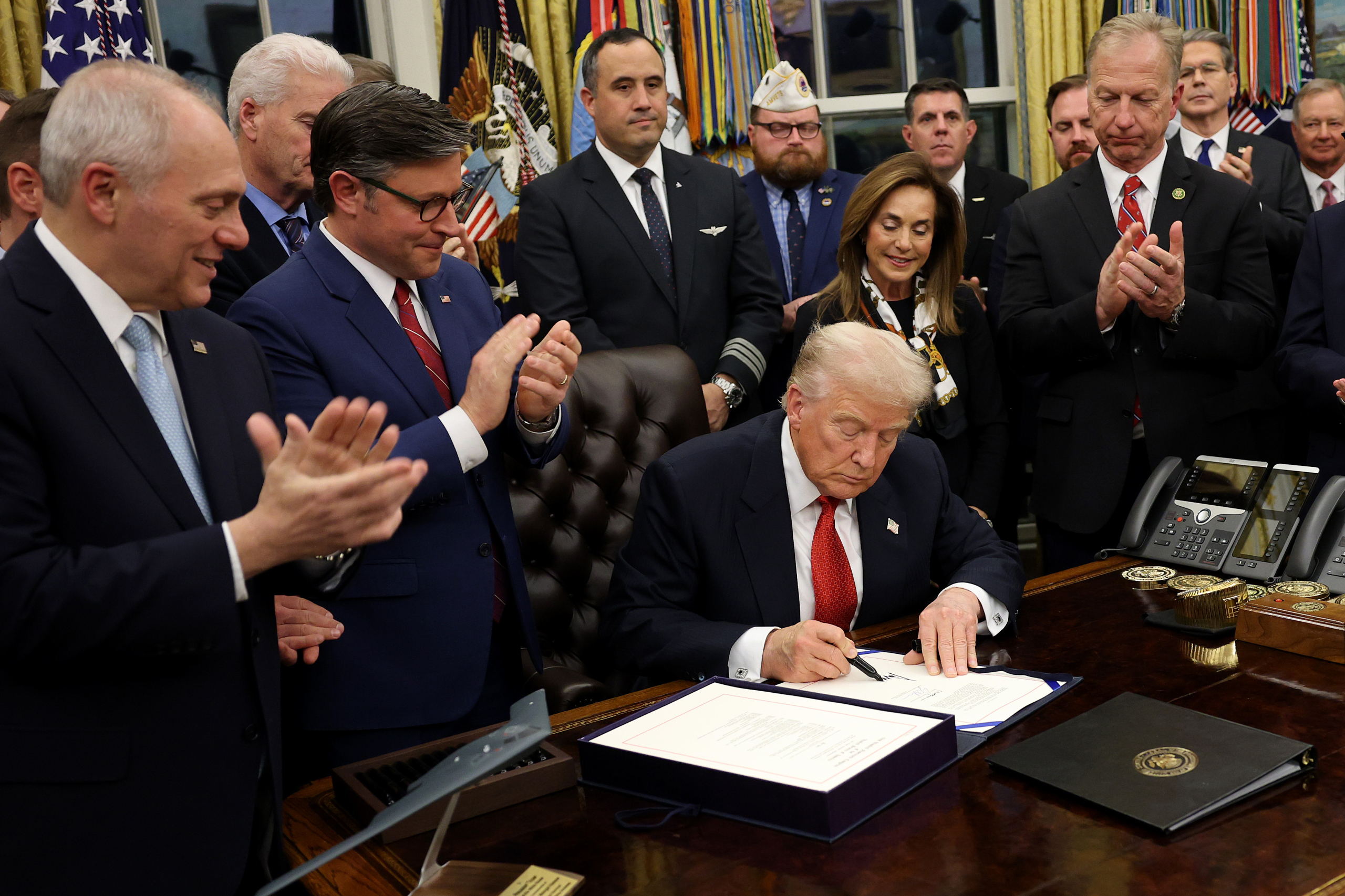
By KEVIN FREKING, JOEY CAPPELLETTI and MATT BROWN Associated Press
WASHINGTON (AP) — President Donald Trump signed a government funding bill Wednesday night, ending a record 43-day shutdown that caused financial stress for federal workers who went without paychecks, stranded scores of travelers at airports and generated long lines at some food banks.
The shutdown magnified partisan divisions in Washington as Trump took unprecedented unilateral actions — including canceling projects and trying to fire federal workers — to pressure Democrats into relenting on their demands.
The Republican president blamed the situation on Democrats and suggested voters shouldn’t reward the party during next year’s midterm elections.
“So I just want to tell the American people, you should not forget this,” Trump said. “When we come up to midterms and other things, don’t forget what they’ve done to our country.”
The signing ceremony came just hours after the House passed the measure on a mostly party-line vote of 222-209. The Senate had already passed the measure Monday.
Democrats wanted to extend an enhanced tax credit expiring at the end of the year that lowers the cost of health coverage obtained through Affordable Care Act marketplaces. They refused to go along with a short-term spending bill that did not include that priority. But Republicans said that was a separate policy fight to be held at another time.
“We told you 43 days ago from bitter experience that government shutdowns don’t work,” said Rep. Tom Cole, the Republican chairman of the House Appropriations Committee. “They never achieve the objective that you announce. And guess what? You haven’t achieved that objective yet, and you’re not going to.”
The frustration and pressures generated by the shutdown was reflected when lawmakers debated the spending measure on the House floor.
Republicans said Democrats sought to use the pain generated by the shutdown to prevail in a policy dispute.
“They knew it would cause pain and they did it anyway,” House Speaker Mike Johnson said.
Democrats said Republicans raced to pass tax breaks earlier this year that they say mostly will benefit the wealthy. But the bill before the House Wednesday “leaves families twisting in the wind with zero guarantee there will ever, ever be a vote to extend tax credits to help everyday people pay for their health care,” said Rep. Jim McGovern, D-Mass.
Democratic leader Hakeem Jeffries said Democrats would not give up on the subsidy extension even if the vote did not go their way.
“This fight is not over,” Jeffries said. “We’re just getting started.”
The House had not been in legislative session since Sept. 19, when it passed a short-term measure to keep the government open when the new budget year began in October. Johnson sent lawmakers home after that vote and put the onus on the Senate to act, saying House Republicans had done their job.
The legislation is the result of a deal reached by eight senators who broke ranks with the Democrats after reaching the conclusion that Republicans would not bend on using a government funding to bill to extend the health care tax credits.
The compromise funds three annual spending bills and extends the rest of government funding through Jan. 30. Republicans promised to hold a vote by mid-December to extend the health care subsidies, but there is no guarantee of success.
The bill includes a reversal of the firing of federal workers by the Trump administration since the shutdown began. It also protects federal workers against further layoffs through January and guarantees they are paid once the shutdown is over. The bill for the Agriculture Department means people who rely on key food assistance programs will see those benefits funded without threat of interruption through the rest of the budget year.
The package includes $203.5 million to boost security for lawmakers and an additional $28 million for the security of Supreme Court justices.
Democrats also decried language in the bill that would give senators the opportunity to sue when a federal agency or employee searches their electronic records without notifying them, allowing for up to $500,000 in potential damages for each violation.
The language seems aimed at helping Republican senators pursue damages if their phone records were analyzed by the FBI as part of an investigation into Trump’s efforts to overturn his 2020 election loss. The provisions drew criticism from Republicans as well. Johnson said he was “very angry about it.”
“That was dropped in at the last minute, and I did not appreciate that, nor did most of the House members,” Johnson said, promising a vote on the matter as early as next week.
The biggest point of contention, though, was the fate of the expiring enhanced tax credit that makes health insurance more affordable through Affordable Care Act marketplaces.
“It’s a subsidy on top of a subsidy. Our friends added it during COVID,” Cole said. “COVID is over. They set a date certain that the subsidies would run out. They chose the date.”
Rep. Nancy Pelosi, D-Calif., said the enhanced tax credit was designed to give more people access to health care and no Republican voted for it.
“All they have done is try to eliminate access to health care in our country. The country is catching on to them,” Pelosi said.
Without the enhanced tax credit, premiums on average will more than double for millions of Americans. More than 2 million people would lose health insurance coverage altogether next year, the Congressional Budget Office projected.
It’s unclear whether the parties will find any common ground on health care before the December vote in the Senate. Johnson has said he will not commit to bringing it up in his chamber.
Some Republicans have said they are open to extending the COVID-19 pandemic-era tax credits as premiums will soar for millions of people, but they also want new limits on who can receive the subsidies. Some argue that the tax dollars for the plans should be routed through individuals rather than go directly to insurance companies.
Sen. Susan Collins, R-Maine, chair of the Senate Appropriations Committee, said Monday that she was supportive of extending the tax credits with changes, such as new income caps. Some Democrats have signaled they could be open to that idea.
House Democrats expressed great skepticism that the Senate effort would lead to a breakthrough.
Rep. Rosa DeLauro of Connecticut, the top Democrat on the House Appropriations Committee, said Republicans have wanted to repeal the health overhaul for the past 15 years. “That’s where they’re trying to go,” she said.
___
Associated Press writer Mary Clare Jalonick contributed to this report.
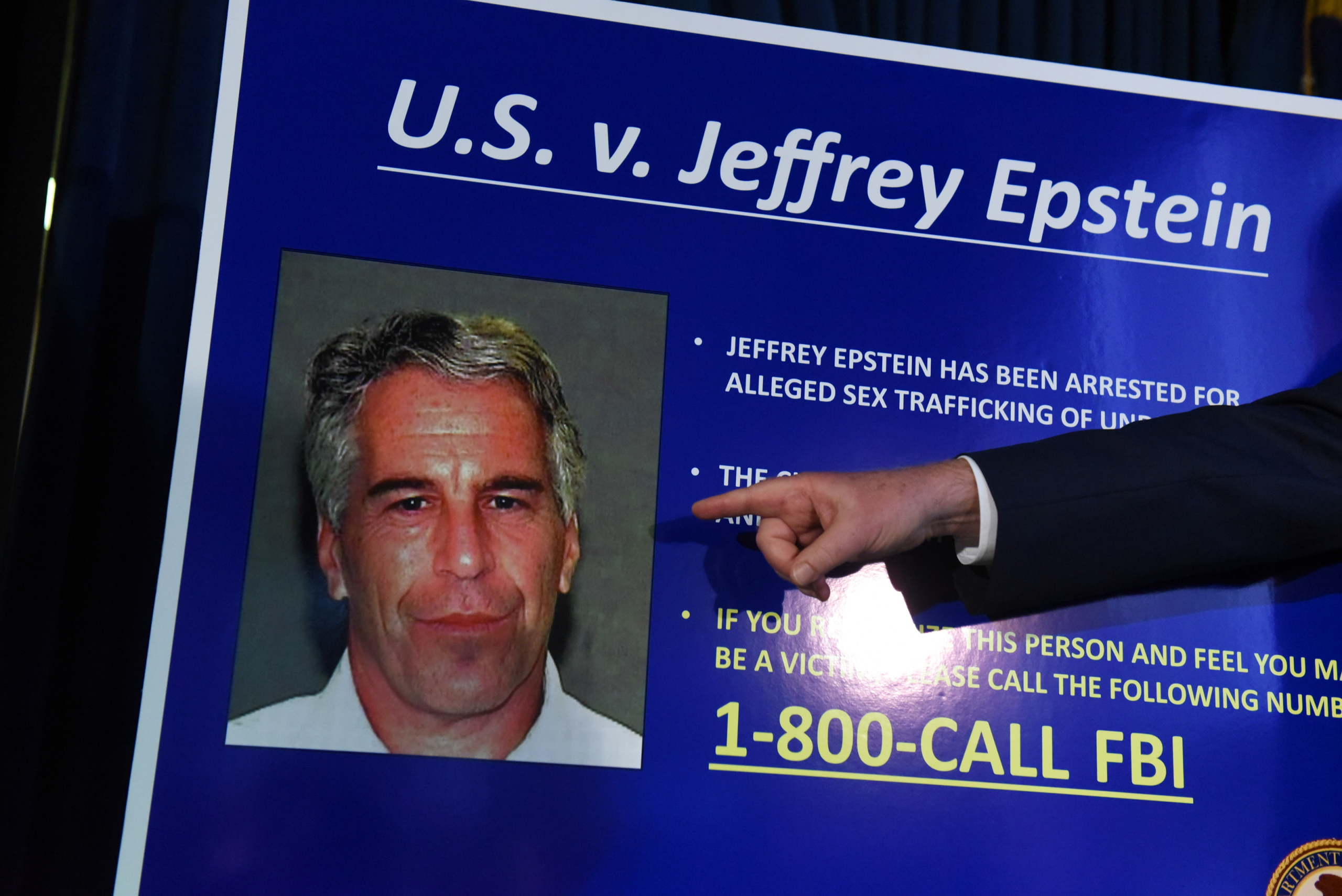
WASHINGTON (AP) — The sex-offending financier Jeffrey Epstein wrote in a 2019 email to a journalist that Donald Trump “knew about the girls,” according to communications released Wednesday, but the White House quickly accused Democrats of selectively leaking the emails to smear the president.
The emails made public by Democrats on the House Oversight Committee also include one that Epstein wrote in 2011 in which he said Trump had “spent hours” at Epstein’s house with a victim of sex trafficking.
The disclosures seemed designed to raise new questions about Trump’s friendship with Epstein and about any knowledge he may have had in what prosecutors call a yearslong effort by Epstein to exploit underage girls. The Republican president has consistently denied any knowledge of Epstein’s alleged crimes and has said he ended their relationship years ago.
The version of the 2011 email released by the Democrats redacted the name of the victim, but Republicans on the committee later said it was Virginia Giuffre, who accused Epstein of arranging for her to have sexual encounters with a number of his rich and powerful friends.
That’s notable because Giuffre, before she died earlier this year, had long insisted that Trump was not among the men who had victimized her.
In a court deposition, she said under oath that she didn’t believe Trump had any knowledge of Epstein’s misconduct with underage girls. And in her recently released memoir, she described meeting Trump only once, when she worked as a spa attendant at his Mar-a-Lago club in Palm Beach, Florida.
Giuffre described being introduced to Trump by her father, who also worked at the club. She described Trump as friendly and said he offered to help her get babysitting jobs with parents at the club. Other members of Epstein’s household staff also said in sworn depositions that, while Trump did stop by Epstein’s house, they didn’t see him engage in any inappropriate conduct.
White House spokeswoman Karoline Leavitt accused the Democrats of having “selectively leaked emails” to “create a fake narrative to smear President Trump.”
The messages are part of a batch of 23,000 documents provided by Epstein’s estate to the Oversight Committee. The release resurfaces a storyline that had shadowed Trump’s presidency during the summer when the FBI and the Justice Department abruptly announced that they would not be releasing additional documents that investigators had spent weeks examining, disappointing conspiracy theorists and online sleuths who had expected to see new revelations.
In one 2019 email to journalist Michael Wolff, who has written extensively about Trump, Epstein wrote of Trump, “Of course he knew about the girls as he asked ghislaine to stop.”
In an April 2, 2011, email to Ghislaine Maxwell, an Epstein girlfriend now imprisoned for conspiring to engage in sex trafficking, Epstein wrote, “I want you to realize that that dog that hasn’t barked is Trump. (Redacted name) spent hours at my house with him ,, he has never once been mentioned. police chief. etc. im 75 % there.”
Maxwell replied the same day: “I have been thinking about that.”
The name of the person said to have spent time with Trump was blacked out of the email, but House Democrats identified the person as a “victim.”
Leavitt said that the unnamed person referenced in the emails is Giuffre, who had accused Britain’s then-Prince Andrew and other influential men of sexually exploiting her as a teenager and who died by suicide in April. Andrew, who recently was stripped of his titles and evicted from his royal residence by King Charles III after weeks of pressure to act over his relationship with Epstein, has rejected Giuffre’s allegations and said he didn’t recall meeting her.
Leavitt said in a statement that Giuffre had “repeatedly said President Trump was not involved in any wrongdoing whatsoever and ‘couldn’t have been friendlier’ to her in their limited interactions.”
“The fact remains that President Trump kicked Jeffrey Epstein out of his club decades ago for being a creep to his female employees, including Giuffre,” the statement said. “These stories are nothing more than bad-faith efforts to distract from President Trump’s historic accomplishments, and any American with common sense sees right through this hoax and clear distraction from the government opening back up again.”
Giuffre came forward publicly after an initial investigation ended in an 18-month Florida jail term for Epstein, who made a secret deal to avoid federal prosecution by pleading guilty instead to relatively minor state-level charges of soliciting prostitution. He was released in 2009.
In subsequent lawsuits, Giuffre said she was a teenage spa attendant at Mar-a-Lago when she was approached in 2000 by Maxwell.
Lawyers for Maxwell, a British socialite, have argued that she never should have been tried or convicted for her role in luring teenage girls to be sexually abused by Epstein. She is serving a 20-year prison term, though she was moved from a low-security federal prison in Florida to a minimum-security prison camp in Texas after she was interviewed in July by Deputy Attorney General Todd Blanche.
Epstein took his own life in a New York jail in 2019 while awaiting trial on federal charges.

This recipe is a classic–crispy on the bottom, tender on top, and packed with savory flavor.
1. Prepare the filling
Place the chopped cabbage in a bowl and sprinkle with salt. Let it sit for about 10 minutes to draw out moisture, then squeeze dry with a paper towel. In a large bowl, mix the cabbage with your protein of choice and the green onions, soy sauce, sesame oil, ginger, garlic, sugar, and egg until well combined.
2. Assemble the pot stickers
Place 1 teaspoon of filling in the center of a wrapper. Then, dip your finger in water and run it around the edge of the wrapper. Next, fold in half and press edges firmly, pleating one side if desired to create the traditional crescent shape. Repeat each step until all of the filling is used.
3. Cook the pot stickers
Heat 1 tablespoon of oil in a large nonstick skillet over medium-high heat. Then, add the dumplings in a single layer (flat side down) and cook until the bottoms turn golden brown, about 2 minutes. Next, carefully add ⅓ cup water, cover immediately, and reduce heat to medium. Steam the pot stickers for 5–6 minutes, until the water has evaporated and the wrappers are tender. Remove the lid and let them crisp up again for about 1 minute.
4. Season it up
Pour in the soy sauce and stir to coat the rice evenly. Taste and add salt or pepper if needed. Cook for another 2 to 3 minutes, allowing the flavors to come together.
5. Serve hot
Serve them hot with dipping sauce of choice and enjoy these warm and flavorful bites!
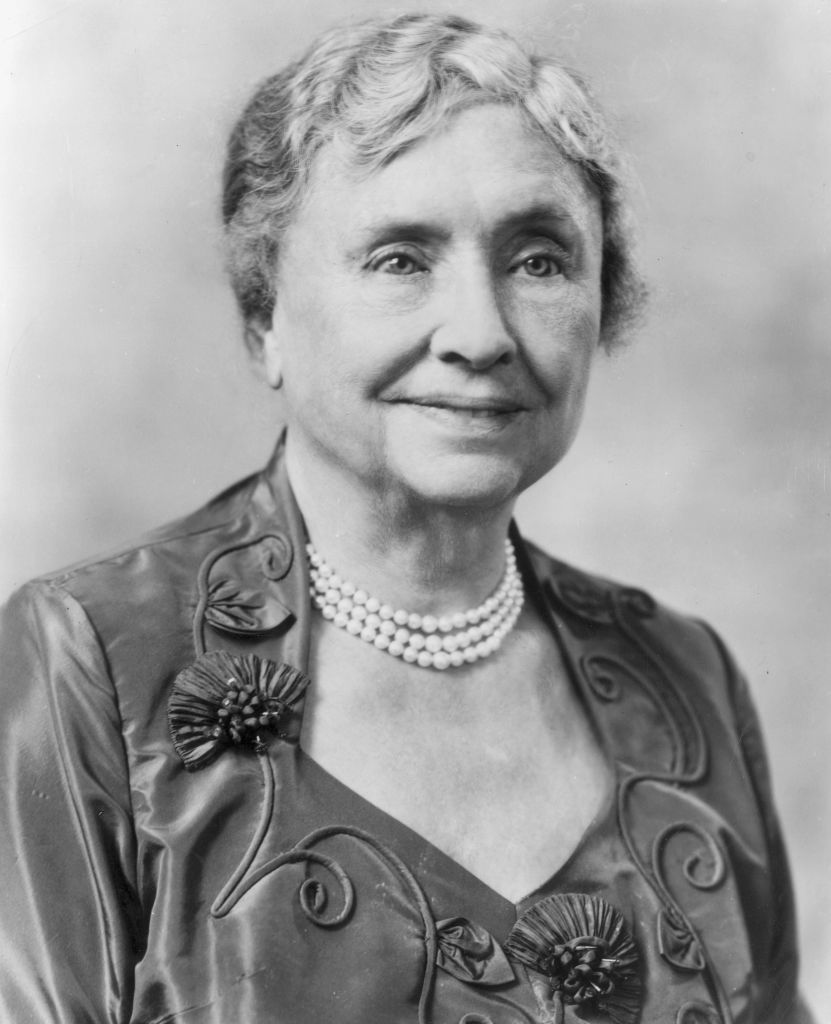

“A well-educated mind will always have more questions than answers.” – Helen Keller
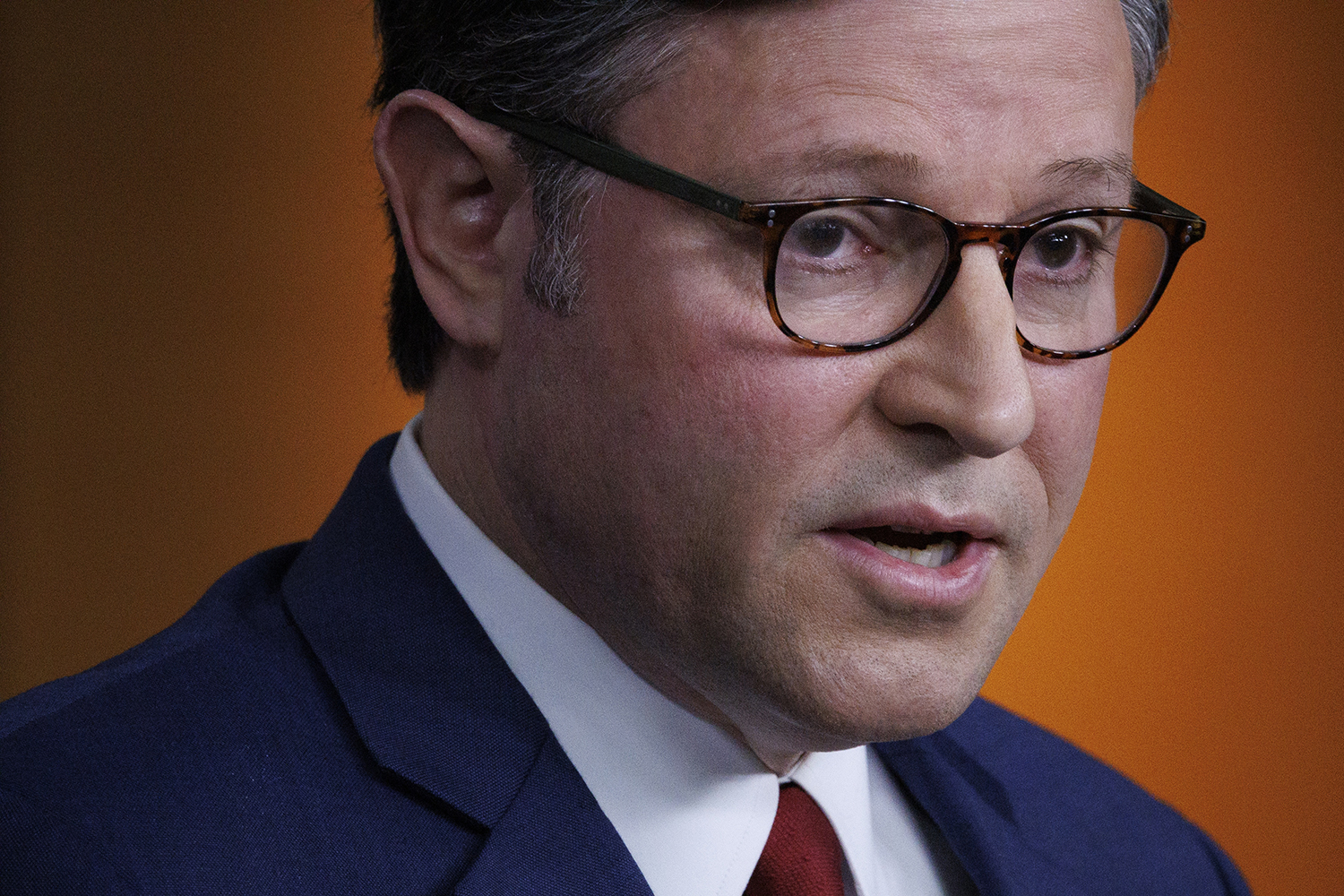
By LISA MASCARO AP Congressional Correspondent
WASHINGTON (AP) — After refusing to convene the U.S. House during the government shutdown, Speaker Mike Johnson is recalling lawmakers back into session — and facing an avalanche of pent-up legislative demands from those who have largely been sidelined from governing.
Hundreds of representatives are preparing to return Wednesday to Washington after a nearly eight-week absence, carrying a torrent of ideas, proposals and frustrations over work that has stalled when the Republican speaker shuttered the House doors nearly two months ago.
First will be a vote to reopen the government. But that’s just the start. With efforts to release the Jeffrey Epstein files and the swearing in of Arizona’s Rep.-elect Adelita Grijalva, the unfinished business will pose a fresh test to Johnson’s grip on power and put a renewed focus on his leadership.
“It’s extraordinary,” said Matthew Green, a professor at the politics department at The Catholic University of America.
“What Speaker Johnson and Republicans are doing, you have to go back decades to find an example where the House — either chamber — decided not to meet.”
When the House gavels back into session, it will close this remarkable chapter of Johnson’s tenure when he showed himself to be a leader who is quietly, but brazenly, willing to upend institutional norms in pursuit of his broader strategy, even at the risk of diminishing the House itself.
Rather than use the immense powers of the speaker’s office to forcefully steer the debate in Congress, as a coequal branch of the government on par with the executive and the courts, Johnson simply closed up shop — allowing the House to become unusually deferential, particularly to President Donald Trump.
Over these past weeks, the chamber has sidestepped its basic responsibilities, from passing routine legislation to conducting oversight. The silencing of the speaker’s gavel has been both unusual and surprising in a system of government where the founders envisioned the branches would vigorously protect their institutional prerogatives.
“You can see it is pretty empty around here,” Johnson, R-La., said on day three of the shutdown, tour groups no longer crowding the halls.
“When Congress decides to turn off the lights, it shifts the authority to the executive branch. That is how it works,” he said, blaming Democrats, with their fight over health care funds, for the closures.
The speaker has defended his decision to shutter the House during what’s now the longest government shutdown in U.S. history. He argued that the chamber, under the GOP majority, had already done its job passing a stopgap funding bill in September. It would be up to the Senate to act, he said.
When the Senate failed over and over to advance the House bill, more than a dozen times, he refused to enter talks with the other leaders on a compromise. Johnson also encouraged Trump to cancel an initial sit-down with the Democratic leaders Sen. Chuck Schumer and Rep. Hakeem Jeffries to avoid a broader negotiation while the government was still closed.
Instead, the speaker, whose job is outlined in the Constitution, second in line of succession to the presidency, held held almost daily press conferences on his side of the Capitol, a weekly conference call with GOP lawmakers, and private talks with Trump. He joined the president for Sunday’s NFL Washington Commanders game as the Senate was slogging through a weekend session.
“People say, why aren’t you negotiating with Schumer and Jeffries? I quite literally have nothing to negotiate,” Johnson said at one point.
“As I’ve said time and time again, I don’t have anything to negotiate with,” he said on day 13 of the shutdown. “We did our job. We had that vote.”
And besides he said of the GOP lawmakers, “They are doing some of their best work in the district, helping their constituents navigate this crisis.”
In many ways, Johnson has become a surprisingly effective leader, an accidental speaker who was elected to the job by his colleagues after all others failed to win it. He has now lasted more than two years, longer than many once envisioned.
This year, with Trump’s return to the White House, the speaker has commandeered his slim GOP majority and passed legislation including the president’s so-called “one big beautiful bill” of tax breaks and spending reductions that became law this summer.
Johnson’s shutdown strategy also largely achieved his goal, forcing Senate Democrats to break ranks and approve the funds to reopen government without the extension of health care subsidies they were demanding to help ease the sticker shock of rising insurance premium costs with the Affordable Care Act.
Johnson’s approach is seen as one that manages up — he stays close to Trump and says they speak often — and also hammers down, imposing a rigid control over the day-to-day schedule of the House, and its lawmakers.
Under a House rules change this year, Johnson was able to keep the chamber shuttered indefinitely on his own, without the usual required vote. This year his leadership team has allowed fewer opportunities for amendments on legislation, according to a recent tally. Other changes have curtailed the House’s ability to provide a robust check on the executive branch over Trump’s tariffs and use of war powers.
Johnson’s refusal to swear-in Grijalva is a remarkable flex of the speaker’s power, leading to comparisons with Senate GOP Leader Mitch McConnell’s decision not to consider President Barack Obama’s Supreme Court nominee, said David Rapallo, an associate professor and director of the Federal Legislation Clinic at Georgetown University Law Center. Arizona has sued to seat her.
Marc Short, who headed up the White House’s legislative affairs office during the first Trump administration, said of Johnson, “It’s impressive how he’s held the conference together.”
But said Short, “The legislative branch has abdicated a lot of responsibility to the executive under his watch.”
As lawmakers make their way back to Washington, the speaker’s power will be tested again as they consider the package to reopen government.
Republicans are certain to have complaints about the bill, which funds much of the federal government through Jan. 30 and keeps certain programs including agriculture, military construction and veterans affairs running through September.
But with House Democratic leaders rejecting the package for having failed to address the health care subsidies, it will be up to Johnson to muscle it through with mostly GOP lawmakers — with hardly any room for defections in the chamber that’s narrowly split.
Jeffries, who has criticized House Republicans for what he called an extended vacation, said, “They’re not going to be able to hide this week when they return.”

This recipe is a lifesaver on busy mornings. It’s super easy to prep, and makes for a great start to your day.
Optional Flavor Combos:
1. Make the base
In a jar or container with a lid, combine the oats, milk, yogurt, sweetener, vanilla and salt. Stir well.
2. Add the toppings
Add your desired flavor mix-ins. (see ideas above or make it your own!)
3. Refrigerate
Cover and refrigerate overnight for at least 6 hours.
4. Finishing touches
In the morning, stir and add a splash of milk if it’s too thick and top with fresh fruit, nuts, or seeds before serving.
5. Enjoy
Grab a spoon and enjoy at home or on-the-go!


Mondays are for people with a mission.
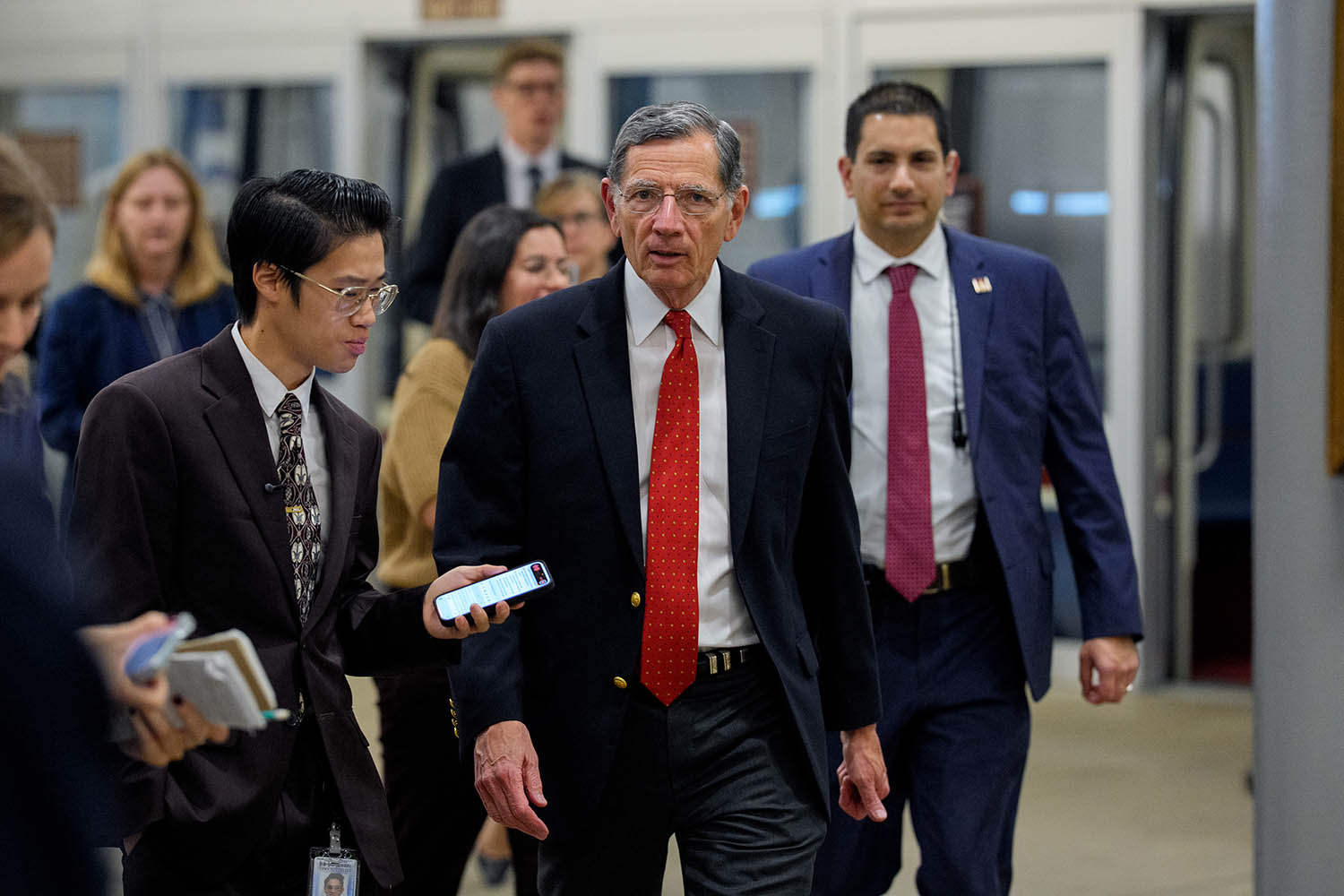
By MARY CLARE JALONICK and LISA MASCARO Associated Press
WASHINGTON (AP) — The Senate passed legislation Monday to reopen the government, bringing the longest shutdown in history closer to an end as a small group of Democrats ratified a deal with Republicans despite searing criticism from within their party.
The 41-day shutdown could last a few more days as members of the House, which has been on recess since mid-September, return to Washington to vote on the legislation. President Donald Trump has signaled support for the bill, saying Monday that “we’re going to be opening up our country very quickly.”
The final Senate vote, 60-40, broke a grueling stalemate that lasted more than six weeks as Democrats demanded that Republicans negotiate with them to extend health care tax credits that expire Jan. 1. The Republicans never did, and five moderate Democrats eventually switched their votes as federal food aid was delayed, airport delays worsened and hundreds of thousands of federal workers continued to go unpaid.
After the vote, Senate Majority leader John Thune, R-S.D., thanked unpaid staff and Capitol Police who stood near him on the floor. He said he realized the strain had been immense for “six excruciating weeks.”
“I am very, very happy to be able to say we are coming to the end,” Thune said.
House Speaker Mike Johnson urged lawmakers to start returning to Washington “right now” given shutdown-related travel delays. “We have to do this as quickly as possible,” said Johnson, who has kept the House out of session since mid-September, when the House passed a bill to continue government funding.
After weeks of negotiations, A group of three former governors — New Hampshire Sen. Jeanne Shaheen, New Hampshire Sen. Maggie Hassan and Independent Sen. Angus King of Maine — agreed to vote to advance three bipartisan annual spending bills and extend the rest of government funding until late January. Republicans promised to hold a vote to extend the health care subsidies by mid-December, but there was no guarantee of success.
Shaheen said Monday that “this was the option on the table” after Republicans had refused to budge.
“We had reached a point where I think a number of us believed that the shutdown had been very effective in raising the concern about health care,” she said, and the promise for a future vote “gives us an opportunity to continue to address that going forward.”
The legislation includes a reversal of the mass firings of federal workers by the Trump administration since the shutdown began on Oct. 1. It also protects federal workers against further layoffs through January and guarantees they are paid once the shutdown is over.
In addition to Shaheen, King and Hassan, Democratic Sen. Tim Kaine of Virginia, home to tens of thousands of federal workers, also voted Sunday in favor of moving forward on the agreement. Illinois Sen. Dick Durbin, the No. 2 Democrat, Pennsylvania Sen. John Fetterman and Nevada Sens. Catherine Cortez Masto and Jacky Rosen also voted yes. All other Democrats, including Senate Democratic leader Chuck Schumer of New York, voted against it.
The moderates had expected a larger number of Democrats to vote with them as 10 to 12 Democratic senators had been part of the negotiations. But in the end, only five switched their votes — the exact number that Republicans needed. King, Cortez Masto and Fetterman had already been voting to open the government since Oct. 1.
Schumer, who received blowback from his party in March when he voted to keep the government open, said he could not “in good faith” support it after meeting with his caucus for more than two hours on Sunday.
“We will not give up the fight,” Schumer said, adding that Democrats have now “sounded the alarm” on health care.
Connecticut Sen. Chris Murphy said “we could have won” and giving up will only embolden Trump. He said voters were on their side after overwhelming wins for Democrats in last week’s elections.
“We were building momentum to help save our democracy,” Murphy said.
Independent Sen. Bernie Sanders of Vermont said that striking a deal was “a horrific mistake.”
Others gave Schumer a nod of support. House Democratic leader Hakeem Jeffries had criticized Schumer in March after his vote to keep the government open. But he praised the Senate Democratic leader on Monday and expressed support for his leadership throughout the shutdown.
“The American people know we are on the right side of this fight,” Jeffries said Monday, pointing to Tuesday’s election results.
It’s unclear whether the two parties would be able to find any common ground on the health care subsidies before a promised December vote in the Senate. House Speaker Mike Johnson, R-La., has said he will not commit to bringing it up in his chamber.
On Monday, Johnson said House Republicans have always been open to voting to reform what he called the “unaffordable care act” but again did not say if they would vote on the subsidies.
Some Republicans have said they are open to extending the COVID-19-era tax credits as premiums could skyrocket for millions of people, but they also want new limits on who can receive the subsidies. Some argue that the tax dollars for the plans should be routed through individuals.
Senate Appropriations Committee Chairwoman Susan Collins said Monday that she’s supportive of extending the tax credits with changes, like new income caps. Some Democrats have signaled they could be open to that idea.
“We do need to act by the end of the year, and that is exactly what the majority leader has promised,” Collins said.
Other Republicans, including Trump, have used the debate to renew their yearslong criticism of the law and called for it to be scrapped or overhauled.
In a possible preview, the Senate voted 47-53 along party lines Monday not to extend the subsidies for a year. Majority Republicans allowed the vote as part of a separate deal with Democrats to speed up votes and send the legislation to the House.
___
Associated Press writers Seung Min Kim, Michelle Price and Stephen Groves contributed to this report.